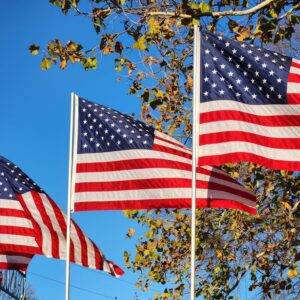by Barry McNamara
Monmouth College is about three hours north and/or west of the closest part of the path of totality for the solar eclipse that will be visible in the eastern half of the United States on April 8.
A Monmouth graduate strongly recommends getting in your car and making that drive, whether it be to just south of St. Louis, to the Illinois-Indiana state line near Terre Haute or even to Indianapolis, where a group of Monmouth students and faculty will be headed. A total eclipse will be visible in those sections of the Midwest at around 2 p.m. Central time.
“If you have a chance to drive to a place that is in the path of totality, definitely try to make that happen,” said Antonetta Axup ’18, who is an official NASA Partner Eclipse Ambassador.
Like night and day
“We Eclipse Ambassadors have a joke about the difference between 99% coverage and 100% totality – it’s as different as day and night,” said Axup, a secondary education teacher and the sixth-grade science lead for the professional learning community in the Dallas-Fort Worth school district. “Jokes aside, it’s a true statement. Ninety-nine percent coverage will be dark, but still too bright for one to be able to see any constellations or planets. One hundred percent totality goes completely dark, meaning you will be able to see some planets and constellations in the sky.”
Axup said she stumbled upon her NASA partnership.
“In the sixth-grade science curriculum, there is a whole unit about ‘Sun, Earth and the Moon,’ and another all about the universe,” she said. “I was searching online for different educator collaboration opportunities and stumbled upon the NASA Partner Eclipse Ambassadors through the Astronomical Society of the Pacific. I applied in the fall of 2022 and was accepted in March 2023.”
In her role, which began with an annular solar eclipse last October, Axup said the goal is to “educate the public about what eclipses are, the different types of eclipses (total vs. annular) and how to safely view them, while also providing certified eclipse-viewing glasses at in-person events.”
“We usually engage with the public through in-person programming,” she said.
One program Axup led was alongside a STEM festival hosted by her school district, and another was an event at the local library for its Problem Solver’s Guild. In addition to learning about eclipses, the children there were able to make their own pinhole projectors using construction paper as a way to explore the shadows that will occur during the eclipse.
Tips and fun facts
Axup shared some viewing strategies, as well as some “fun facts” about eclipses, including advice to “listen for night sounds, such as more bird calls and crickets chirping.”
“If you are not on the path of totality, you can still see an amazing celestial event,” she said. “Just make sure you have certified eclipse viewing glasses. Sunglasses will not keep your eyes safe during an eclipse. During the partial eclipse, your certified eclipse viewing glasses must be worn whenever you are looking up to prevent retinal burns, known as eclipse blindness. Your glasses are certified if they have the official International Safety Standard (ISO) marking and that it is certified for 12312-2, or as ISO 12312-2:2015.”
Those who do not have glasses can observe the eclipse using a pinhole projector or a pinhole viewer.
“For the pinhole projector, take a piece of paper, punch holes in it with whatever design you wish, and hold the paper out so that it makes a shadow on the ground,” said Axup. “Have the sun to your back and look at the shadows that your paper and holes are making. During the eclipse, you will see crescents form in the shadows.”
A cardboard box (such as a cereal box) is needed for a pinhole viewer, as well as a piece of white paper and some aluminum foil. Axup said an internet search for “cereal box pinhole viewer” will lead to easy directions or a video tutorial.
She reported that solar eclipses only happen during the new moon phase of the lunar cycle, and that whenever there is a solar eclipse, a lunar eclipse always happens either in the months before or after the solar eclipse and vice versa. The upcoming lunar eclipse will happen in September as a partial lunar eclipse, with only a small sliver of the moon looking red in color. It will be visible in most of the United States.
“Many cultures around the world have different views about eclipses,” said Axup. “Some cultures fear them as a bad omen, some welcome them as a way to usher in new beginnings and communication with deities, and some see them as a time to be solemn and reverent.”







